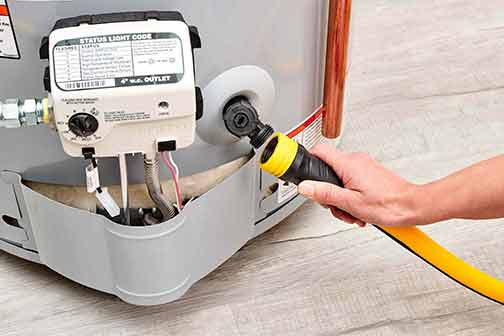
A working water heater is one of the most indispensable appliances for the smooth running of your home. Water heaters make everyday activities like doing the laundry, washing dishes and taking a shower easier or even fun, says Nelson Management.
However, like other essential systems in the homes, most homeowners ignore their water heater until it malfunctions. Only when they turn a hot water faucet and get a blast of cold water do they attend to their water heater?
Yet water heaters are not hard to maintain; all you need is a good understanding of a few simple steps and a fixed schedule. If you do these two things, your water heater will serve you well and exceed its projected lifespan.
In this post, we discuss the most essential maintenance step for the smooth operation of a storage water heater. To get the full value from your water heater, you should drain it periodically. How do you drain a water heater?
Draining your water heater
This maintenance step helps remove crud or mineral deposits that have settled at the bottom of the water heater tank. It improves the appliance’s performance and prolongs its life. Draining a water heater is easy. Here is how to do it.
How to drain and flush a water heater
Required tools: Garden hose, bucket or drain and screwdriver
Cut the power or gas supply
Before doing any maintenance work on your water heater, always ensure the power or gas supply is off.
Let the water cool
To avoid burns, you may want to wait until the water inside the tank has cooled. This step is optional, but you must take proper care not to get burned.
Connect garden hose
Look for the drain valve and connect a garden hose to it. The valve will be near the bottom of the water heater tank. Connect the other end of the hose to a bucket, flood drain or sump basin.
Close the cold water supply
You will see two water lines connected to the water heater. The cold water line should say “cold” or “in.” If it doesn’t, you may need to track the lines to see which goes to the water meter or pressure tank. That is the cold water supply; close it.
Open the TPR Valve
The TPR (temperature and pressure relief) valve can be found on the side of the tank, towards its top. Lift the flap to open the valve. That will allow air into the tank as water flows out of it. You may also open a hot water faucet on a floor above your water heater.
Open the drain valve
Open the drain valve at the bottom with the garden hose attached. If the water is still hot, avoid putting your hand or foot into it. Keep small children and pets out of the area. When the water stops flowing, the tank is empty.
Flush the water heater
Open the cold water supply with the drain valve still open. Cold water will flow into and out of the tank under pressure. This additional step ensures that any debris left inside the tank will be washed out.
Repeat step 7
Close the drain valve and leave the cold water supply open until the tank is full. Open the drain valve and let the water flow out. That will ensure that the tank is clean.
Refill the tank
Close the drain valve and let cold water refill the tank.
Restore power or gas supply
Do not forget to reconnect your water heater to power or relight the gas. After this, wait until the water is heated to the desired temperature to ensure the water heater works.
How long does this process take, and how often should you do it?
On average, it should not take more than 30 minutes to drain a 50-gallon water heater. The actual amount of time it takes to drain your water heater will vary depending on:
- Your home’s water pressure.
- The amount of sediment inside the tank. If you have never drained the water heater, expect it to take longer.
- How handy you are. A professional plumber will do it in less time than a homeowner.
How often you drain your water heater depends on the quality of the water entering your home. If your area’s water is hard or has a lot of sediments, you may have to do this step every six months. Otherwise, once a year is sufficient. A reputable plumber can help you make the right decision.
